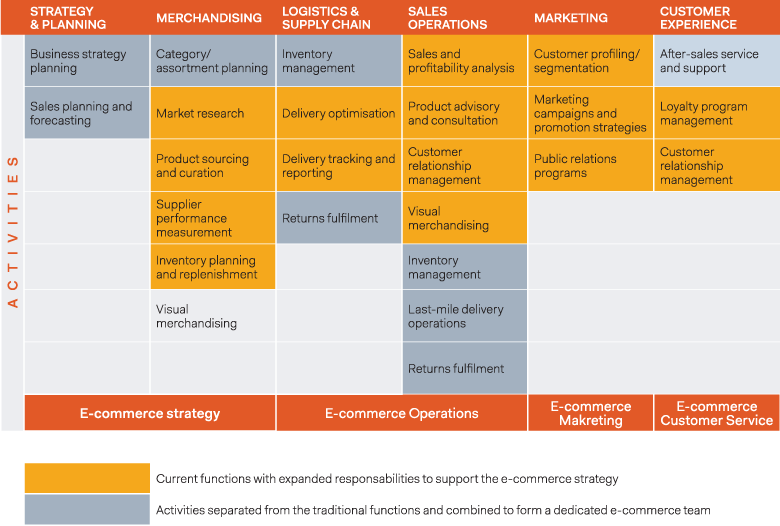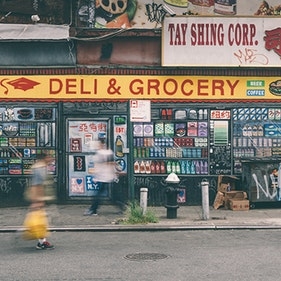A Rapidly Changing Industry
Rapid change is the dictum of today’s economies and businesses. Whether it’s making a purchase at the touch of a mobile phone, taking mass-produced products and personalizing them, or sharing just about everything from transportation to living spaces, transformation is the watchword.
The retail industry is riding the transformation wave by curating meaningful customer journeys and store concepts. This approach has opened up new opportunities and reshaped the meaning of work in the retail industry, driving demand in areas such as user experience design, data science, product design, and partnerships. It has also significantly redesigned jobs in traditional functions such as store operations, merchandising, and logistics.
While retailers have focused their innovative efforts on the front-of-house by seeking to enhance the customer experience, we have yet to see a similar breakthrough from an employee experience perspective. Given the tight labor market, workforce attraction and retention remains a top issue for retailers. It’s imperative the industry realign the customer-employee experience to make the workforce future-ready. The organization’s future-of-work action plans need to be structured and forward-looking, honing in on job redesign.
What Is Job Redesign?
Job redesign is neither a new nor a revolutionary concept. Everyone has experienced changes to jobs whether knowingly or unknowingly. It’s a process wherein the tasks assigned to roles are realigned to ensure that work is:
- Aligned with the organization’s future strategy
- Easy to perform and productive
- Engaging for the individual
Debunking Job-Redesign Myths
There are common myths and fears associated with job redesign. Here are a number of myths and misconceptions about job redesign – and the underlying facts and reality.
MYTH #1: “WILL I BE REPLACED BY A ROBOT?"
In short, the answer is no. Technology and automation is not necessarily an impending threat meant to replace humans. Indeed, technology and automation in the past have always played a crucial part in enabling the workplace, rather than disrupting it. For example, self-checkout machines were deployed to alleviate employee workload, so that personnel could focus on better serving the customers.
MYTH #2: “THERE’S NO NEED FOR US TO CONSCIOUSLY REDESIGN JOBS."
The environment in which companies operate is evolving rapidly. Business models are constantly challenged or disrupted by competitors, new technologies emerge and refresh rapidly, and employees often experience change fatigue as they navigate through new processes and systems. Initiating a job redesign plan enables the organization to proactively take stock of work being performed today, understand inefficiencies, and realign work in accordance to the organization’s future operating context. There are many instances where the job redesign committee has eliminated obsolete operating processes, some of which have resulted in productivity savings by up to 50 percent.
MYTH #3: “JOB REDESIGN IS LARGELY SUPPORTED BY TECHNOLOGY AND SHOULD BE DRIVEN BY THE IT FUNCTION”
A job redesign effort requires all parties in the organization to work in tandem. IT is a key enabler in the process, as it is responsible for procuring or designing systems to execute work, but it cannot operate in isolation. Successful job redesign efforts require all functions to collaborate effectively: the operating function has to clearly define pain points and opportunity areas, the IT function must secure the most viable technology solution, and the HR function needs to train and equip employees with the new skillsets required.
Getting Started On Job Redesign
The job redesign process may seem intimidating and is perceived to be laborious to many. To provide a sustainable structure to drive job redesign efforts, we’ve broken the process down to three main considerations: aligning to the business strategy, partnering with stakeholders, and reskilling the workforce.
BUSINESS STRATEGY ALIGNMENT
The design of a job is defined as the tasks assigned to the job based on the organization’s strategy, structure, value chain of activities, and processes. Changes to each element directly impacts tasks and hence job design.
- Future strategy: Understand the organization’s future strategy such as new investments products or business models.
- Organization structure: Allocate and reassign roles and responsibilities in the organization based on the future strategy.
- Value chain of activities/Process flow: Revise operating procedures and activities across functions.
STAKEHOLDER PARTNERSHIP
The success of a job redesign effort relies on partnering effectively with all stakeholders. It is important to identify the appropriate stakeholders and assign responsibilities in the job redesign journey. To achieve maximum buy-in to the new ideas, take time to learn and address each stakeholder group’s interests/ motivations and concerns, and foster a close working relationship to drive through the new initiatives.
Ensure that sufficient time is allocated to introduce the new ideas. Work reallocation can be a sensitive topic. Be sure that stakeholders across all functions recognize the need for change, and be prepared to provide support in the transition.
PROMOTE UPSKILLING
Organizations need to first identify and understand the baseline skills in the existing workforce, and to envision the skills required in the future. As the organization reshapes the roles and expectations of current employees, it needs to assess their current skillsets and look out for other skills that can be better utilized in the organization.
Be cognizant of any skill gaps and offer employees opportunities to reskill and/or upskill. The ubiquity of mobile learning and communities for social learning has made learning engaging and accessible to everyone.
Case Study
JOB REDESIGN FOR RETAILERS IN SINGAPORE
Singapore’s retail sector is undergoing massive transformation, and the shift toward omnichannel retailing has created opportunities for retailers to rethink their business delivery models. Coupled with the pressure arising from a tightening of the foreign worker quota and an aging workforce, retailers are having trouble attracting and retaining the right talent. In particular, the retail operations and warehousing functions have seen high vacancy and turnover rates, as these roles are deemed as less attractive. In addition, the labor market does not produce enough e-commerce and data science talent to meet the demand of omnichannel retailing.
WHAT WE DID
We were appointed by a Singapore government agency to deliver a job redesign initiative by partnering in a pilot program with seven Singaporean retailers. We conducted detailed reviews of their business strategies, assessed emerging retail business models, and restructured the organization and operating procedures so as to redesign jobs. (Please see Table, below.) Jobs were redesigned through automation and by reallocating tasks; employees were reskilled and transitioned to their new roles. We then took what had been learned in the pilot studies and developed a publicly available toolkit consisting of a job redesign framework and success stories from the pilot organizations. Finally, we arranged for a series of training sessions to guide retailers in Singapore on their job redesign efforts
RESULTS
We successfully piloted job redesign solutions with retailers in Singapore and achieved tangible improvements in labor productivity by up to 50 percent. More than one hundred retailers were coached in a period of two months.

Sara Tiew is the Job Design and Public Sector Leader for the Career Consulting Group at Mercer Singapore. Mercer is a global consulting leader in talent, health and wealth.








